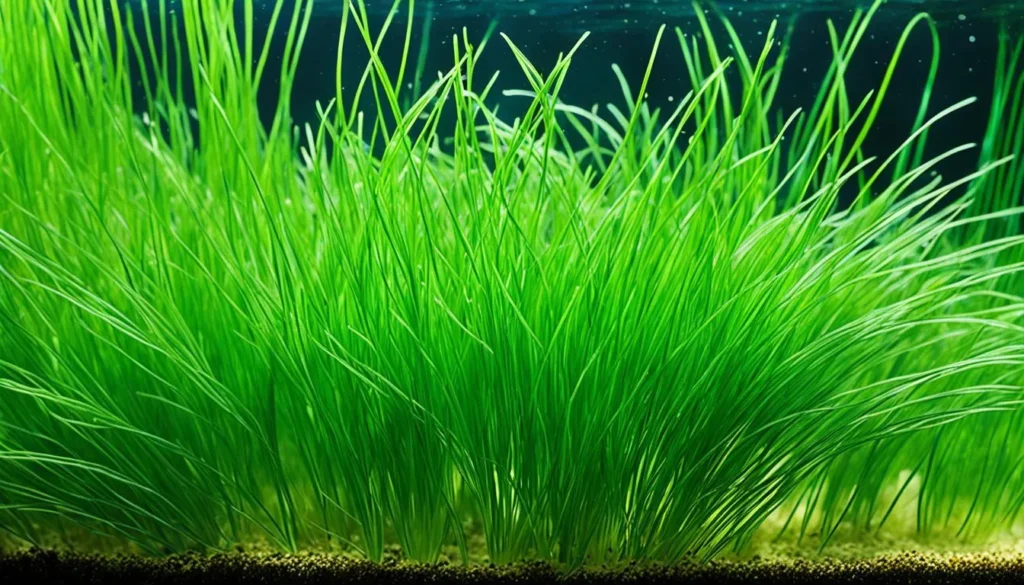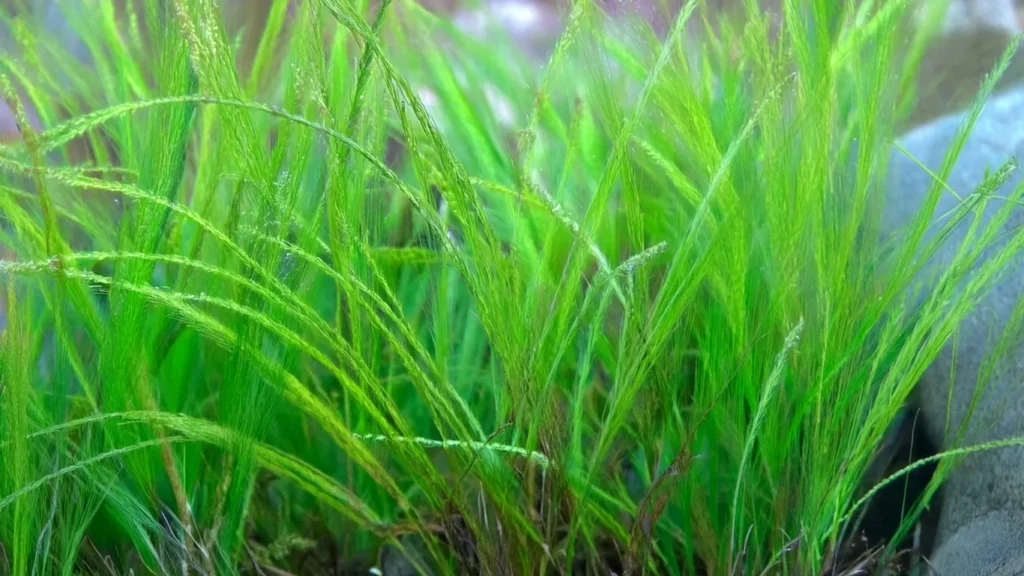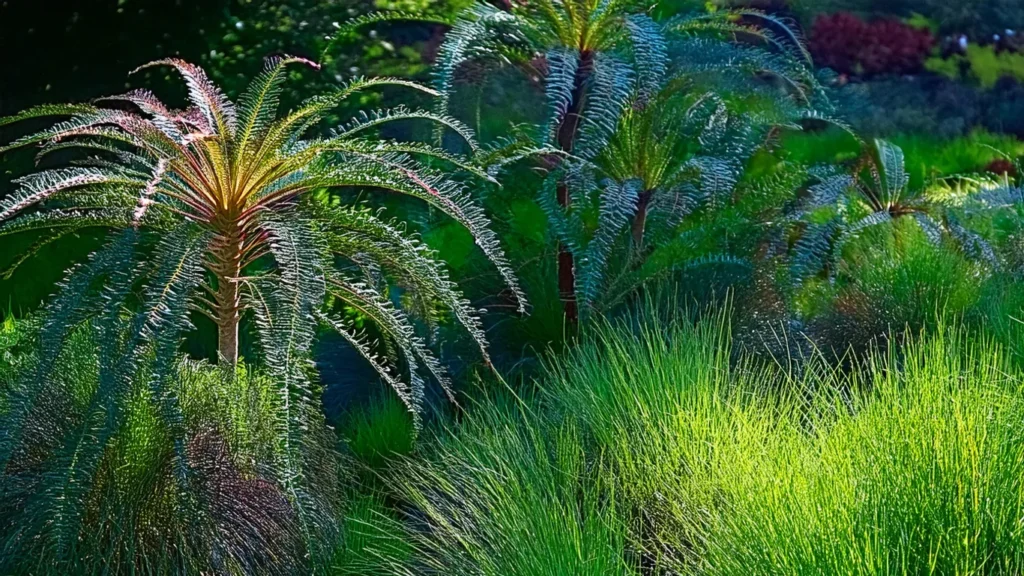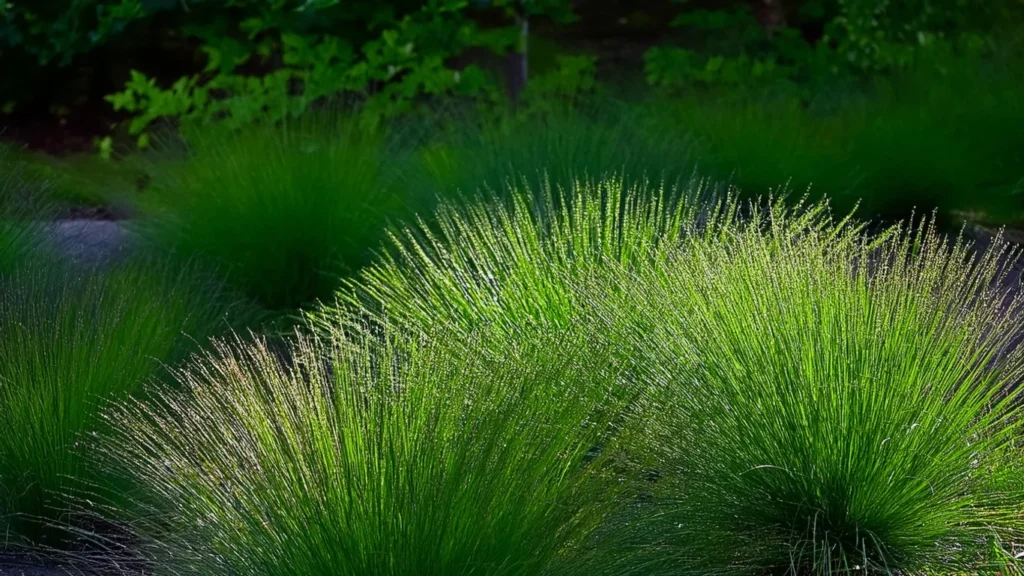In this comprehensive guide, we will explore the fascinating world of Eleocharis Parvula, commonly known as Dwarf Hairgrass.
Whether you are a beginner or an experienced aquarist, this guide will provide all the information you need about this popular aquatic plant.
From its physical description to its care requirements, tank setup, propagation techniques, and troubleshooting tips, we aim to help you achieve lush, green carpets in your freshwater aquarium.

Key Takeaway
- Eleocharis Parvula, or Dwarf Hairgrass, is a sought-after aquatic grass for aquariums.
- It forms dense and vibrant carpets, enhancing the beauty of freshwater aquariums.
- Proper care, tank setup, and maintenance are essential for the successful growth of Dwarf Hairgrass.
- Propagation through runners allows you to expand your aquascape and create a denser carpet.
- Dwarf Hairgrass offers both aesthetic appeal and ecological benefits to your freshwater aquarium.
What Is Eleocharis Parvula (Dwarf Hairgrass)?
Eleocharis parvula, also known as Dwarf Hairgrass, is a species of freshwater aquatic plant belonging to the Cyperaceae family.
This remarkable plant is highly sought after in the aquarium hobby due to its ability to form dense carpets, resembling terrestrial lawn grass.
Unlike typical grass, Dwarf Hairgrass thrives underwater, adding a unique touch to freshwater aquariums.
Its slender leaves and delicate appearance bring a refreshing and natural aesthetic to any aquascape.
Being part of the Cyperaceae family, which includes other aquatic grasses, Eleocharis parvula demonstrates excellent adaptability in water environments.
This makes it an ideal choice for aquarists looking to create lush, green landscapes in their tanks.
The popularity of Dwarf Hairgrass can be attributed to its versatility and ease of maintenance, making it suitable for both beginners and experienced aquarists.

Natural Habitat And Origin
Eleocharis parvula, commonly known as Dwarf Hairgrass, originates from various regions worldwide, including North America, South America, Europe, Asia, and Africa.
It typically grows in moist or wet habitats such as marshes, bogs, riversides, and shallow waters with sandy or gravelly substrates.
In its natural habitat, Dwarf Hairgrass forms dense mats or carpets along the water’s edge, providing habitat and shelter for small aquatic organisms.
Physical Characteristics
- Height: It typically grows to a height of 3 to 7 centimeters (1 to 3 inches), making it an ideal foreground or midground plant in aquariums.
- Leaf Structure: The leaves are thin and grass-like, with a bright green coloration. They are typically narrow and linear, resembling blades of grass.
- Growth Form: Dwarf Hairgrass forms dense, carpet-like mats when planted in groups. Its growth pattern is characterized by spreading runners that produce new plantlets along the substrate.
- Root System: It has a fibrous root system that anchors the plant in the substrate. The roots are relatively delicate and spread horizontally, helping the plant to establish and spread across the aquarium floor.
- Texture: The foliage of Dwarf Hairgrass has a fine texture, adding visual interest and depth to the aquascape. It creates a natural-looking carpet effect when planted densely.

Importance Of Lighting And Temperature
- Lighting plays a significant role in the growth of Dwarf Hairgrass. Adequate light intensity and spectrum are essential for photosynthesis, enabling the plant to convert light energy into chemical energy for growth.
- Temperature also influences the metabolism and overall health of the plant. Providing the correct lighting and temperature conditions will contribute to the success of cultivating a lush carpet of Dwarf Hairgrass in your aquarium.
Optimal Water Condition
- Temperature: Keep the water temperature in the range of 20°C to 28°C (68°F to 82°F). This range mimics the plant’s natural habitat conditions and supports healthy growth.
- pH Level: Maintain a slightly acidic to neutral pH range between 6.0 and 7.5. Dwarf Hairgrass can tolerate a wide pH range but thrives in slightly acidic conditions.
- Water Hardness (GH/KH): Aim for moderate to slightly hard water with a general hardness (GH) between 3 to 8 degrees and carbonate hardness (KH) between 2 to 6 degrees. These levels provide essential minerals while preventing fluctuations that can stress the plant.
- Lighting: Provide moderate to high-intensity lighting of around 0.5 to 3 watts per gallon. Adequate lighting is crucial for photosynthesis and healthy growth. Use a timer to ensure a consistent light cycle of 8 to 10 hours per day.
- Nutrient Levels: Ensure a balanced supply of nutrients, including nitrogen (N), phosphorus (P), potassium (K), iron (Fe), and trace elements. Supplement with liquid fertilizers or root tabs as needed to prevent nutrient deficiencies.
Eleocharis Parvula Dwarf Hairgrass
Substrate Requirement
- Particle Size: Use a fine-grained substrate such as aquarium sand or fine gravel with a particle size between 1 to 3 millimeters. The small particle size allows the roots to anchor firmly and spread easily.
- Nutrient Content: Choose a substrate rich in nutrients to support the growth of Dwarf Hairgrass. Consider using specialized plant substrates or adding nutrient-rich substrates like aquatic soil or clay-based substrates. These substrates provide essential nutrients for plant growth and root development.
- Depth: Provide a substrate layer depth of at least 2 to 3 inches (5 to 7.5 centimeters) to accommodate the plant’s root system. A deeper substrate layer allows for better root penetration and stability, promoting healthy growth and propagation.
- pH Buffering: Select a substrate with pH-buffering capabilities to help maintain stable water parameters. This is especially important in planted aquariums where fluctuating pH levels can stress the plants. Look for substrates labeled as pH-stabilizing or buffering to ensure optimal conditions for Dwarf Hairgrass.
Placement Option
- Foreground Planting: Dwarf Hairgrass is commonly used as a foreground plant due to its small size and carpeting growth habit. Plant it in the front section of the aquarium to create a lush carpet effect that adds depth and visual interest to the aquascape.
- Midground Accent: While Dwarf Hairgrass is primarily a foreground plant, it can also be used as a midground accent to break up larger expanses of substrate or to transition between foreground and background plants. Plant it in small clusters or patches to add texture and dimension to the midground area.
- Under Hardscape Features: Dwarf Hairgrass can be planted around hardscape features such as rocks, driftwood, or aquarium decorations. This helps soften the edges of the hardscape and creates a natural transition between the hardscape and the substrate.
- In Habitat Zones: Mimic Dwarf Hairgrass’s natural habitat by planting it in areas with moderate to high lighting and nutrient availability. Create open spaces in the substrate to allow the plants to spread and form a dense carpet.

Recommended Tank Size
- Nano Tanks: Dwarf Hairgrass can be grown in smaller aquariums, such as nano tanks with capacities ranging from 5 to 20 gallons. These smaller tanks are suitable for creating compact foreground carpets or midground accents.
- Small to Medium Tanks: For a more expansive carpet effect or to cover larger areas of the aquarium floor, consider using Dwarf Hairgrass in small to medium-sized tanks ranging from 20 to 50 gallons.
- Large Tanks: In larger aquariums exceeding 50 gallons, Dwarf Hairgrass can still be used effectively to create lush carpeting, particularly in the foreground or midground sections. Larger tanks offer more space for the plants to spread and create a visually striking carpet effect.
Choosing Complementary Plants And Tank Mates
Creating a harmonious and balanced aquascape involves carefully selecting complementary plants and compatible tank mates for your Eleocharis Parvula (Dwarf Hairgrass) tank.
By considering the contrasting heights, colors, and growth patterns of other plant species, you can enhance the overall aesthetic appeal of your aquarium.
Choosing suitable tank mates that won’t damage or disturb the delicate carpet of Dwarf Hairgrass is essential for maintaining a thriving ecosystem.
| Plant Species | Description |
| Anubias nana | A slow-growing plant with dark green leaves that contrasts nicely with the bright green carpet of Dwarf Hairgrass. |
| Cryptocoryne wendtii | This plant features various color variations, adding visual interest and creating a beautiful contrast alongside Dwarf Hairgrass. |
| Ludwigia repens | With its vibrant red or orange foliage, Ludwigia repens creates a stunning color contrast against the green carpet of Dwarf Hairgrass. |
| Rotala wallichii | This delicate plant adds an elegant touch with its narrow leaves and vibrant pink hues, complementing the lush green of Dwarf Hairgrass. |

Balancing Nutrients For Optimal Growth
- In addition to proper lighting and CO2 levels, providing the right balance of nutrients is crucial for the optimal growth of Eleocharis parvula. Nutrients such as nitrogen (N), phosphorus (P), and potassium (K) are essential for plant health and development.
- While some nutrients can be obtained naturally from fish waste and decaying matter in the aquarium, regular fertilization may be necessary to ensure an adequate supply of nutrients for Dwarf Hairgrass.
- Monitoring and adjusting nutrient levels based on the specific needs of your plants can help prevent nutrient deficiencies or excesses that may hinder growth.
- To ensure the health and vitality of your aquatic grass, it is important to maintain suitable lighting conditions, CO2 levels, and nutrient balance. By optimizing these factors, you can create an ideal environment for the successful growth of Eleocharis parvula in your freshwater aquarium.
RELATED: Echinodorus Horemanii Red For A Vibrant Aquarium Plant
Cultivation Tips
- Lighting: Provide moderate to high-intensity lighting to mimic the plant’s natural habitat conditions. Aim for a lighting duration of 8 to 10 hours per day to support photosynthesis and healthy growth.
- Substrate: Use a nutrient-rich substrate with fine grains to anchor the delicate roots of Dwarf Hairgrass. Ensure a depth of at least 2 to 3 inches to allow for proper root penetration and stability.
- CO2 and Nutrients: Supplement with CO2 and liquid fertilizers to provide essential nutrients for robust growth. Dwarf Hairgrass benefits from a balanced supply of nitrogen, phosphorus, potassium, iron, and micronutrients.
- Planting Density: Plant Dwarf Hairgrass in dense clusters or mats to encourage carpet-like growth. Space individual plants about 1 to 2 centimeters apart to achieve full coverage of the substrate.

Plant Propagation Tips
- Runners: Dwarf Hairgrass naturally sends out runners, which produce new plantlets along their length. Allow these runners to grow and develop plantlets. Once the plantlets have formed roots, you can separate them from the parent plant and replant them elsewhere in the aquarium.
- Division: If the Dwarf Hairgrass has formed dense clumps, you can divide it into smaller portions. Carefully separate the clumps into individual sections, ensuring that each section has both roots and leaves. Replant these sections in the substrate, spacing them appropriately to allow for growth.
- Trimming and Planting Clippings: Use scissors or aquascaping tools to trim the tops of the Dwarf Hairgrass. These clippings can be replanted directly into the substrate, where they will take root and grow into new plants. Ensure that each clipping has some roots attached for successful propagation.
- Encouraging Growth: To encourage propagation, provide optimal growing conditions, including adequate lighting, nutrient supplementation, and CO2 (if applicable). Regularly monitor the plant for new growth and adjust care as needed to promote healthy propagation.
RELATED: Echinodorus Helanthium Tenellus Care Guide For Beginners
The Ecological Benefits Of Dwarf Hairgrass
- Dwarf Hairgrass is known for its remarkable ability to remove toxins from the water. Through a process called phytoremediation, the plant absorbs and detoxifies pollutants, such as ammonia, nitrites, and nitrates, which can be harmful to aquatic life. By incorporating Dwarf Hairgrass into your aquarium, you can help maintain a healthier and cleaner environment for your fish and other inhabitants.
- The dense growth of Dwarf Hairgrass acts as a natural filter, consuming nitrates and preventing algae blooms. This helps to promote a well-balanced and visually appealing aquatic environment.
- Oxygenation is another important ecological benefit of Dwarf Hairgrass. Through photosynthesis, the plant releases oxygen into the water, enhancing the dissolved oxygen levels.
- This is especially beneficial to fish and other aquatic organisms that require high oxygen levels to thrive. Dwarf Hairgrass helps to create a healthier and more oxygen-rich environment, supporting the overall well-being of your aquarium inhabitants.
- Beyond its functional benefits, Dwarf Hairgrass provides important cover and hiding spots for small creatures in the aquarium. The dense carpet-like growth creates a natural habitat for fish fry, shrimp, and other tiny organisms, protecting them from predators.

Conclusion
Eleocharis parvula (Dwarf Hairgrass) is a captivating aquatic plant that offers both aesthetic appeal and ecological benefits to freshwater aquariums.
With proper care, tank setup, and maintenance, you can create lush, green carpets that enhance the beauty of your aquascape.
We hope that this guide has provided you with valuable insights and information to grow and enjoy Dwarf Hairgrass in your aquarium successfully.
Frequently Asked Question
How Do I Maintain The Health Of Dwarf Hairgrass?
Maintain proper lighting, carbon dioxide (CO2) levels, and nutrient balance through photosynthesis, carbon dioxide management, and fertilization.
How Do I Propagate Dwarf Hairgrass?
Propagate Dwarf Hairgrass through runners, ensure root health and follow steps for successful cultivation and spreading. Regular pruning helps maintain a dense carpet.
What Are Common Issues With Dwarf Hairgrass, And How Can I Troubleshoot Them?
Common issues include algae growth, nutrient deficiencies, and pest infestations. Troubleshooting tips include proper maintenance and management techniques.
Where Can I Buy Quality Dwarf Hairgrass Specimens?
Purchase healthy plants from reputable sources, prepare for plant arrival and acclimation, and consider the benefits of tissue culture plants.
Which Plants And Tank Mates Pair Well With Dwarf Hairgrass?
Choose complementary plant species with contrasting heights and growth patterns. Select tank mates that won’t disturb the delicate carpet of Dwarf Hairgrass.
- Unveiling The Wonders Of Riccia Fluitans In Aquascapes - August 7, 2024
- Vallisneria Gigantea Var. Guide To Care And Cultivation At Home - July 31, 2024
- Vesicularia Dubyana Care & Growth Guide Tips For Beginner Gardeners - July 30, 2024
